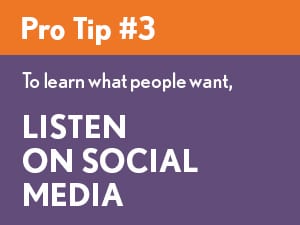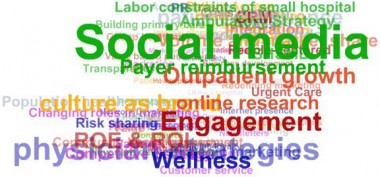Healthcare Marketers: Listen and Engage through Social Media to Learn About Your Audience
This week in our Healthcare Branding Series, let’s concentrate on the importance of listening and engaging with your social media audience.
To engage healthcare consumers who visit your website, you must know what types of content they want. If you’re unsure, try engaging them in various ways on social media, and listen to their feedback and input to gain insights that can help drive your digital content strategy. Here are some tips to get you started:
- Create social posts that interest your followers. Do you have something relevant to say about a trending healthcare topic, such as the flu or a popular news story? Share tips and information on a wide range of issues – from health-related facts and warnings to health promotions and educational events. Pay attention to likes, comments or shares – people read click because they find something interesting; they share because they’re convinced others will find it interesting too. Likes and shares, then, are decent indicators of what types of content people want to see. Use that information to steer the direction of your future blog posts.
- Ask questions. You don’t have to be hard-hitting. The questions can be light and fun. And since photos have an engagement rate of 87 percent (as opposed to four percent with links), why not share a photo with a question to get followers talking. The answers have the potential to offer great insight.
- Generate engaging moments. Social networks are for sharing. Engage your followers by encouraging them to post something. After all, you must give to get. For example, during American Heart Month you could urge followers to share selfies of their favorite ways to exercise for heart health. You can ask for photos of their best all-pink outfits for Breast Cancer Awareness Month. It could even be a simple question, such as, “What are you most thankful for this Thanksgiving?” Take the responses as indications of where and how to invite and inspire people into a conversation, to take part in a community forum, so to speak. Low response rates mean people don’t find it a worthwhile topic to act on.
- Observe patient connections. Patients sharing their experiences with one another can be a very powerful thing. Not only can they receive emotional support from others with their condition, but patients can also offer word-of-mouth recommendations for physicians or services. Watch and listen to the conversations they’re having. What questions are they asking other patients? What are their concerns? This insight may provide ways to improve on and offline patient experiences.
When you engage with followers, you may at times receive very honest opinions about your organization. If you receive praise, don’t forget to say thanks. If you get a complaint, recognize that it’s an opportunity for informed improvements driven by customer feedback. Always acknowledge patient or visitor concerns. If there are multiple similar complaints, review how your hospital or practice is living your healthcare brand.
For more information, visit our other topics in this series:


 You’ve seen them on blogs as handy visual aids that spotlight keywords from page content. Word clouds make it easy for web surfers to determine if any given blog or post interests them enough to keep reading. But for marketers, word clouds offer communication tools that can be used outside the blog as well.
You’ve seen them on blogs as handy visual aids that spotlight keywords from page content. Word clouds make it easy for web surfers to determine if any given blog or post interests them enough to keep reading. But for marketers, word clouds offer communication tools that can be used outside the blog as well.